We may receive a commission when you use our affiliate links. However, this does not impact our recommendations.
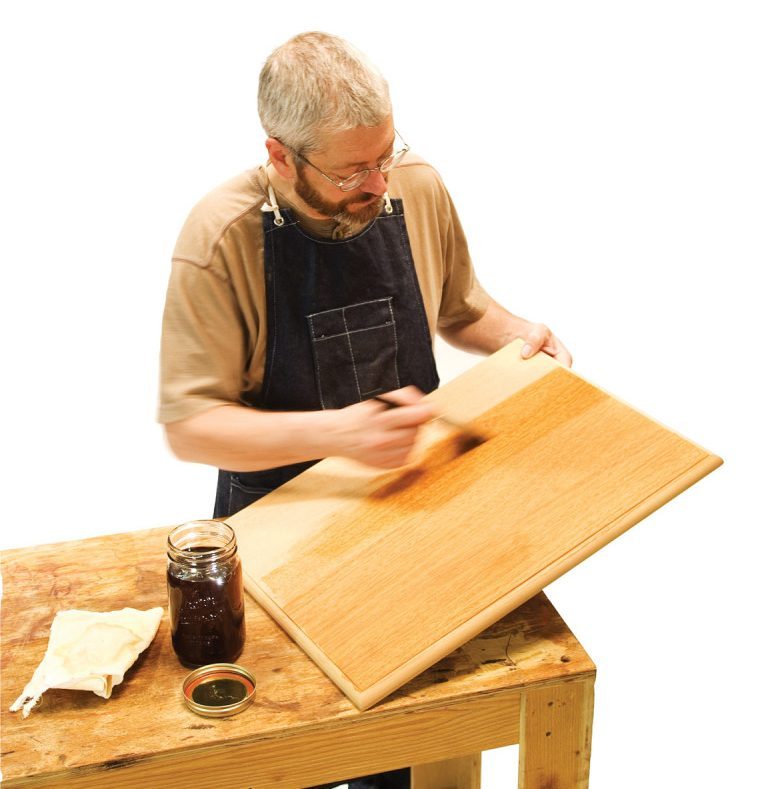
Make friends with this beautiful, versatile finish
Recently I was asked to judge a woodworking show. One of the best pieces was a wonderfully constructed grandfather clock. Unfortunately, a quick brushing of polyurethane ruined the clock’s appearance. The clock’s creator said he chose polyurethane for protection. But how durable does a coating on a grandfather clock have to be? Why put a finish originally designed for floors on a beautiful clock? What a difference shellac would have made. Don’t get me wrong, polyurethane is a great choice for high wear surfaces like a desk or kitchen tabletop. However, I find people use poly by default simply because it’s readily available as well as durable. But is durability all that matters? There are many other considerations that make shellac a great choice for adding beauty and protection to your projects.
Many woodworkers have walked (stormed) away in frustration after trying shellac. It’s a unique finish and there are some fundamental ground rules one must follow. The tips in this story cover the basics that will get you going on the right track.
SHELLAC’S MANY ADVANTAGES
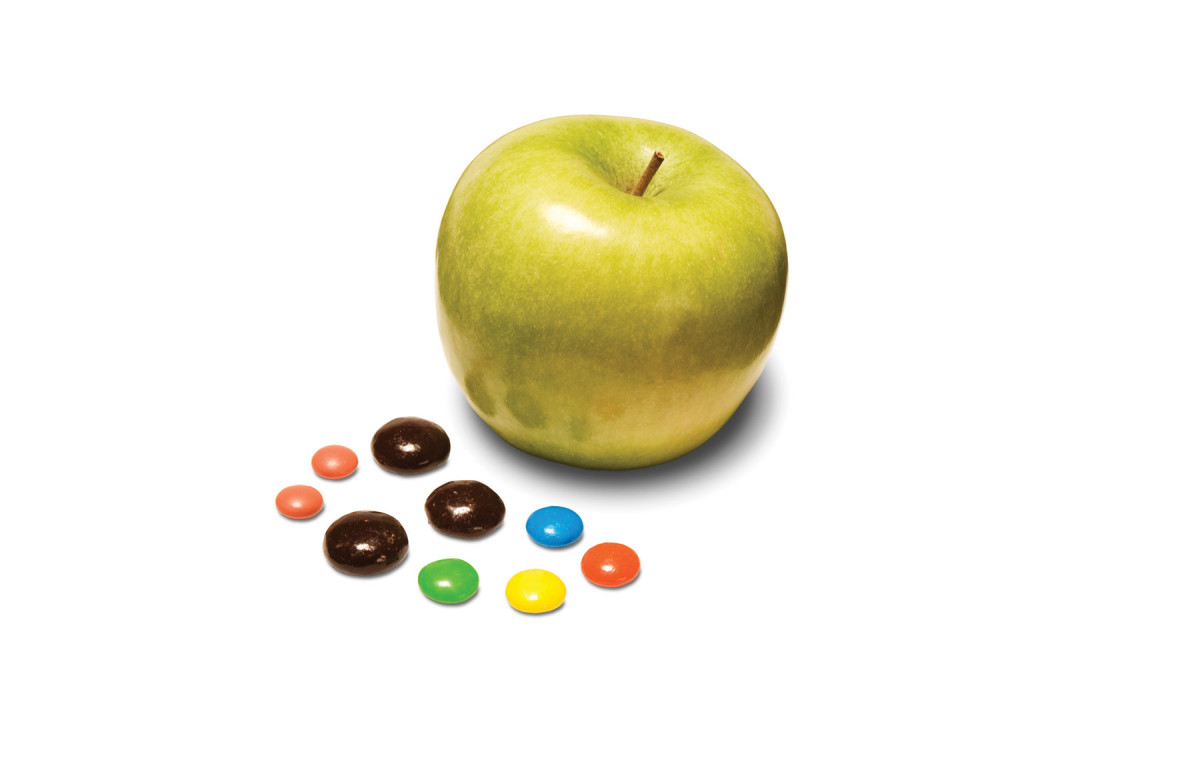
- Non-toxic – Shellac is the safest finish you can use. It is a naturally occurring, organic material that’s approved by the FDA to coat apples, candy and pharmaceuticals. When mixed with pure grain alcohol, shellac is completely free of toxic chemicals.
- Repairable – A damaged or worn shellac finish is easy to restore or repair.
- Rubs out well – Shellac is harder than most finishes, including polyurethane. The hardness gives it excellent rubbing qualities.
- Excellent moisture barrier – If you want to keep wood movement to a minimum, shellac can’t be beat.
- Fast drying – That means fewer troubles with dust settling into a wet film. You can usually recoat in under an hour for a fast build.
- Universal sealant – Dewaxed shellac can be used as a seal coat under almost any finish.
- Less Sanding – Shellac does not require sanding between coats in order for one coat to adhere to another.
BUYING ADVICE
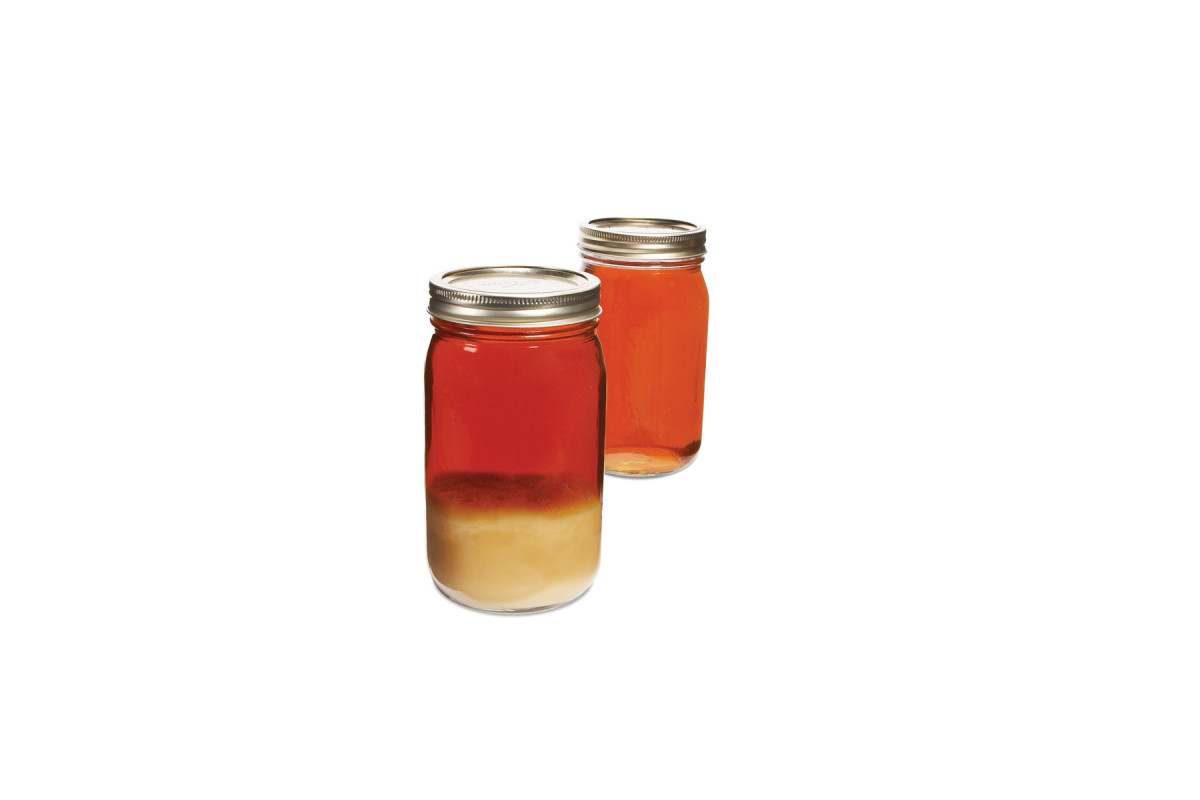 Should you buy waxed or de-waxed shellac? Wax occurs naturally in shellac. If shellac is going to be the only finish, then shelalc with wax works fine. The wax decreases drag when padding or brushing on shellac. If shellac is used as a sealer or undercoat for other finishes, choose the dewaxed version to avoid adhesion problems, especially with polyurethane. Dewaxed shellac also has greater clarity and is more heat and water resistant. You can dewax your own shellac by letting the wax settle out and pouring off the clear dewaxed portion.
Should you buy waxed or de-waxed shellac? Wax occurs naturally in shellac. If shellac is going to be the only finish, then shelalc with wax works fine. The wax decreases drag when padding or brushing on shellac. If shellac is used as a sealer or undercoat for other finishes, choose the dewaxed version to avoid adhesion problems, especially with polyurethane. Dewaxed shellac also has greater clarity and is more heat and water resistant. You can dewax your own shellac by letting the wax settle out and pouring off the clear dewaxed portion.
The next decision a shellac buyer makes is color. A good rule of thumb is to use the darker colors on darker woods and light colors on light.
Shellac is a natural product made from the excretions of the lac beetle. Shellac comes in colors that range from dark reddish brown to a golden amber color depending on the time of harvest and degree of processing.
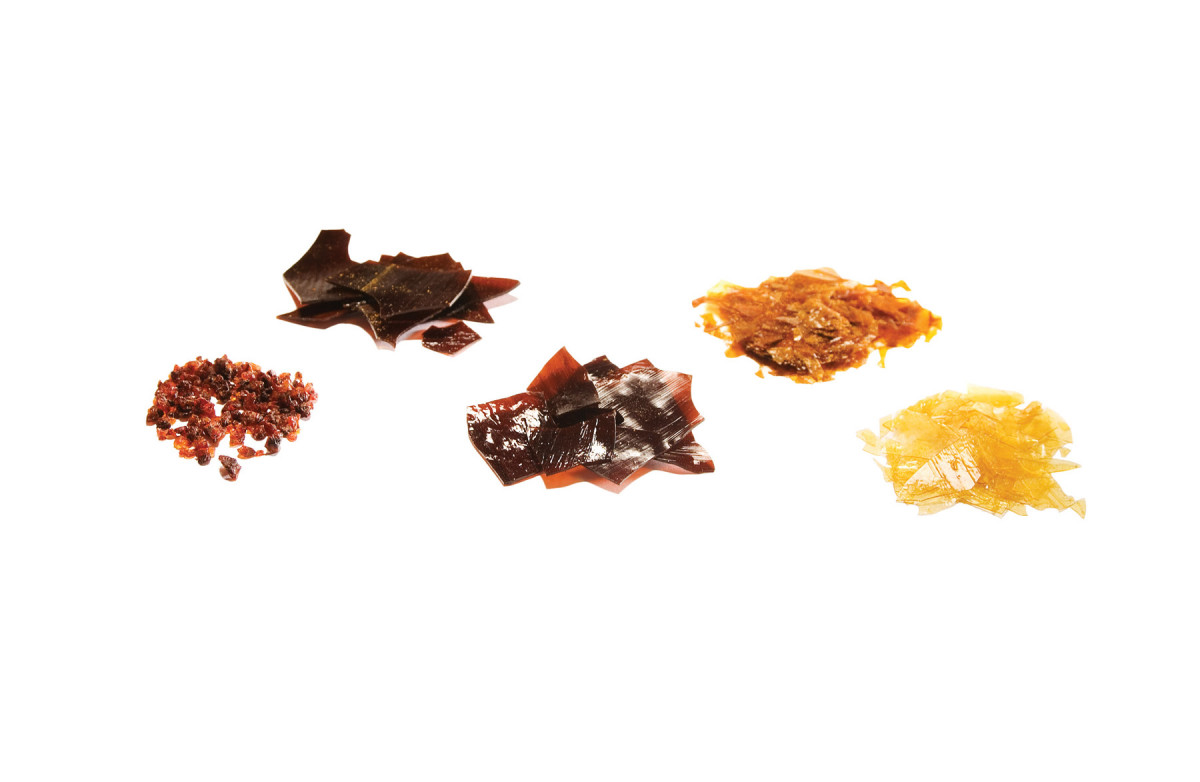
Left to Right: Seed lac, button lac, garnet, orange, super blond
There are five commonly available grades of shellac from least refined to most refined: Seedlac, Buttonlac, Garnet, Orange and Super blonde. Seed-Lac is simply collected from the trees, washed and dried. It still contain leaves, sticks and bug parts. Buttonlac has been filtered a bit. It has a rich, dark brown color. Garnet is a little lighter colored and has more red than Buttonlac. Orange shellac is probably the most familiar grade to consumers. Super Blonde shellac is the most highly refined. It has most of the color and all the wax removed. All dry shellacs should be strained through a fine filter after mixing.
THE RIGHT MIX
 Using shellac that is mixed too thick is the #1 mistake people make. Always thin your shellac to a 1-2 lb. cut before use. Old-time cabinetmakers used pure ethanol, or “spirits”, to mix their shellac. Pure ethanol is still sold at liquor stores in some states as “Everclear” ($20 a quart). Make sure it’s the 190-proof stuff. When mixed with dry shellac flakes Everclear produces an all-natural, nontoxic finish (safer than any water-based finish). When the liquor store cashier wonders where the heck I’m going with a case of 190-proof Everclear. I just say I’m going to get shellacked!
Using shellac that is mixed too thick is the #1 mistake people make. Always thin your shellac to a 1-2 lb. cut before use. Old-time cabinetmakers used pure ethanol, or “spirits”, to mix their shellac. Pure ethanol is still sold at liquor stores in some states as “Everclear” ($20 a quart). Make sure it’s the 190-proof stuff. When mixed with dry shellac flakes Everclear produces an all-natural, nontoxic finish (safer than any water-based finish). When the liquor store cashier wonders where the heck I’m going with a case of 190-proof Everclear. I just say I’m going to get shellacked!
Denatured alcohol is the most common solvent for shellac. It costs a lot less than Everclear. It’s essentially ethanol contaminated with another chemical to poison or “denature” the ethanol. This saves you from paying a liquor tax.
Specialty alcohols that contain no water (200 proof) are also available. These alcohols are blended to dissolve shellac a little quicker and dry a little slower, so it has more time to level out.
GRIND YOUR OWN FLAKES
 Shellac flakes take quite a while to dissolve. When my shop is cool, I’ve had to wait more than 2- days. Too often I have failed to plan ahead and been forced to wait for my shellac to dissolve before work could progress. You can greatly reduce the time it takes to mix shellac by grinding up the flakes. A simple blade-type coffee grinder does the trick.
Shellac flakes take quite a while to dissolve. When my shop is cool, I’ve had to wait more than 2- days. Too often I have failed to plan ahead and been forced to wait for my shellac to dissolve before work could progress. You can greatly reduce the time it takes to mix shellac by grinding up the flakes. A simple blade-type coffee grinder does the trick.
Warm temperatures also speed up the process. If your shop is on the cool side, find a warm place to mix your shellac. I’ve been known to put a jar in my car on a sunny day. In an hour or less the ground flakes are totally dissolved.
SMOOTH OUT THE FINISH
 Brushed-on shellac can “window pane”, leaving a fat thick edges. It can also “orange peel” when sprayed. This happens most often with heavy mix; so keeping your shellac thin (1-2lb. cut) is your best defense. If you are still having problems, try some “Shellac-Wet”. Just a few drops in a quart of shellac will greatly improve flow-out and leveling. Do not use this additive if you plan to topcoat the shellac with a different finish as it may cause adhesion problems.
Brushed-on shellac can “window pane”, leaving a fat thick edges. It can also “orange peel” when sprayed. This happens most often with heavy mix; so keeping your shellac thin (1-2lb. cut) is your best defense. If you are still having problems, try some “Shellac-Wet”. Just a few drops in a quart of shellac will greatly improve flow-out and leveling. Do not use this additive if you plan to topcoat the shellac with a different finish as it may cause adhesion problems.
READY TO USE
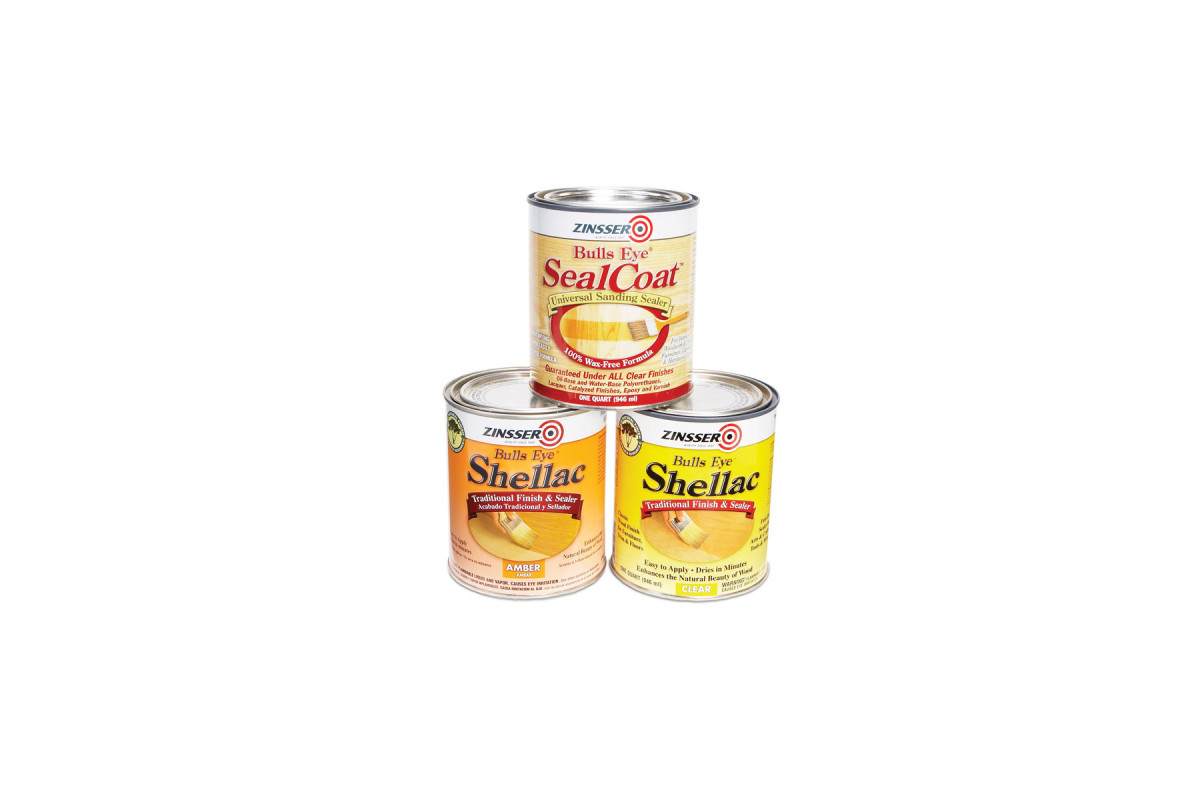 Zinsser‘s “Amber” shellac is a ready to use orange shellac and their “Clear” shellac is a blond shellac. Both of these products contain wax and are mixed to a 3- pound cut that should be thinned to a 1-2 pound cut before use. “SealCoat is a 2-pound cut of dewaxed blonde shellac. SealCoat is a universal sealer that adds just the right amount of warmth and color underneath a water based finish.
Zinsser‘s “Amber” shellac is a ready to use orange shellac and their “Clear” shellac is a blond shellac. Both of these products contain wax and are mixed to a 3- pound cut that should be thinned to a 1-2 pound cut before use. “SealCoat is a 2-pound cut of dewaxed blonde shellac. SealCoat is a universal sealer that adds just the right amount of warmth and color underneath a water based finish.
Mixed shellac has a 6-month shelf life. Zinnser has found a way to stretch the shelf life of premixed shellac to 3 years. Always look for the date of manufacture on the can before you buy. All three products are also available in handy spray cans.
QUICK MIX SHELLAC
 For quick repair work, or for those times when you didn’t mix quite enough shellac there’s “Gold Dust”. It’s basically pulverized shellac. The powder is designed for repair work where fast, no wait mixing of small batches can be handy.
For quick repair work, or for those times when you didn’t mix quite enough shellac there’s “Gold Dust”. It’s basically pulverized shellac. The powder is designed for repair work where fast, no wait mixing of small batches can be handy.
CONTROL THE SHEEN
 Most woodworkers are used to buying finishes with the desired sheen (gloss, semi-gloss, satin or flat) right off the shelf. With shellac you have one choice – high gloss. Traditionally shellac’s sheen was adjusted by rubbing it out. Shellac is easy to rub to a glass smooth finish with the desired sheen. However, carved or heavily molded surfaces can be tricky to rub out. Thankfully, you can add a flattening agent like Shellac Flat to adjust the sheen. Shellac Flat is made with amorphous silica and alcohol.
Most woodworkers are used to buying finishes with the desired sheen (gloss, semi-gloss, satin or flat) right off the shelf. With shellac you have one choice – high gloss. Traditionally shellac’s sheen was adjusted by rubbing it out. Shellac is easy to rub to a glass smooth finish with the desired sheen. However, carved or heavily molded surfaces can be tricky to rub out. Thankfully, you can add a flattening agent like Shellac Flat to adjust the sheen. Shellac Flat is made with amorphous silica and alcohol.
MIX SMALL BATCHES
 I make shellac in small batches so it won’t go bad before I can use it up. Mixed shellac’s shelf life is about 6 months. After that it won’t dry properly.
I make shellac in small batches so it won’t go bad before I can use it up. Mixed shellac’s shelf life is about 6 months. After that it won’t dry properly.
I use a small food scale (available at grocery stores) to weigh out the flakes. To mix one pint of 1-lb.-cut shellac, dissolve 2 oz. of shellac flakes in 16 oz. of alcohol. For a 2-lb. cut, double the flakes. After the shellac is fully dissolved, strain it through fine mesh cheesecloth or filter to remove impurities.
CUSTOM COLORS
 Shellac is easy to color. Whether you’re looking for deep, soft brown or garish cadmium yellow, shellac can handle it. Just add alcohol- based dye. For pure colors, super-blond shellac works best.
Shellac is easy to color. Whether you’re looking for deep, soft brown or garish cadmium yellow, shellac can handle it. Just add alcohol- based dye. For pure colors, super-blond shellac works best.
USE THE RIGHT BRUSH
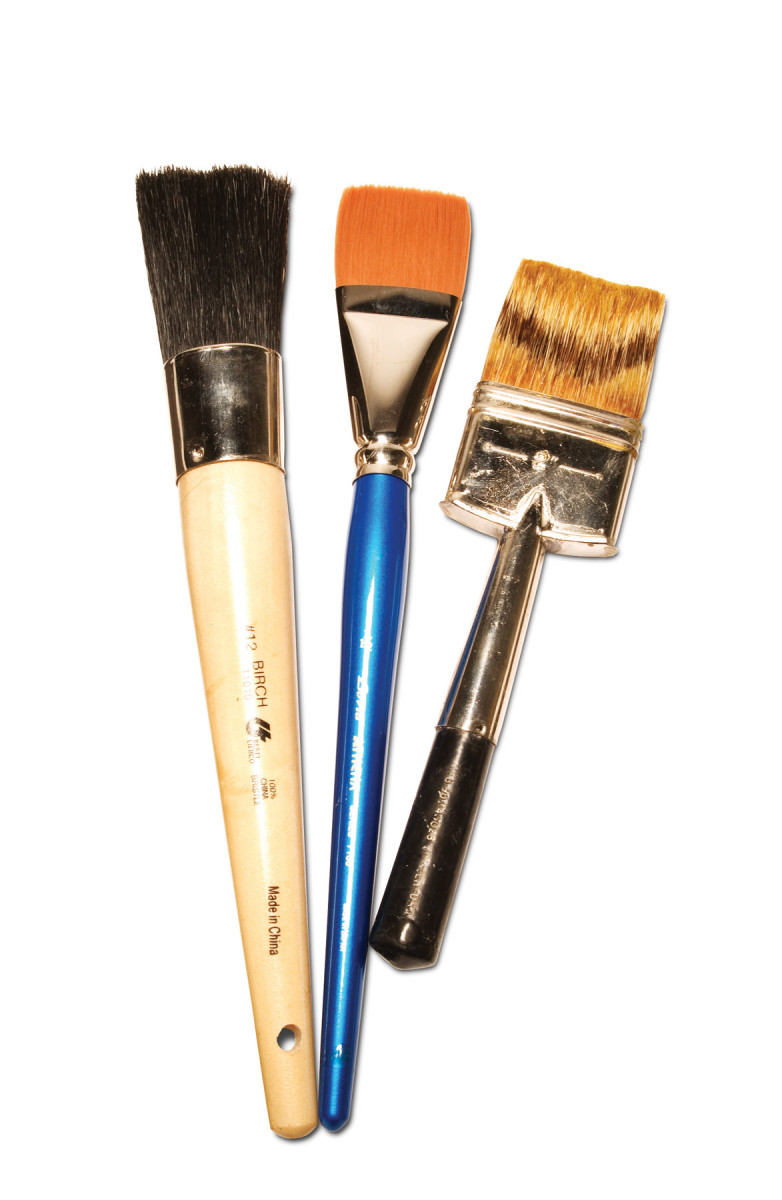
Left to Right: Oval sash brush, synthetic golden taklon, fitch brush.
Using the right brush is essential if you want your relationship with shellac to start off on the right foot. An inexpensive oval sash brush, like the Biestt-Liebco #12 shown here, is perfect for applying shellac on trim work and molded edges. The natural china bristles easily wrap around contours without leaving big drips. Golden Taklon is an amazing synthetic material used on brushes like the Athena 7100 Series. The bristles are wonderfully fine and soft and give you a precise edge and control.
A high quality badger hair fitch brush with a chisel edge is a great brush for applying shellac on a large, flat surface like a tabletop.
Here are some supplies and tools we find essential in our everyday work around the shop. We may receive a commission from sales referred by our links; however, we have carefully selected these products for their usefulness and quality.









I wonder if the article could have an insert near the top explaining the “1-2lb. cut”? Even after reading the whole article, as a newbie to woodworking, I am still not quite sure what this is, is it a ratio, or just a traditional term.
#Lb. cut is ratio of shellac to solvent with the solvent pinned at 1 gallon.
A 1Lb. cut is 1Lb. of shellac to 1 gallon of solvent, a 2Lb. cut is 2Lbs. of shellac to 1 gallon of solvent, etc.
shellac.net and shellacfinishes.com are a couple of sites with more information and decent prices.
I wonder if the article could have an insert near the top explaining the “1-2lb. cut”? Even after reading the whole article, as a newbie to woodworking, I am still not quite sure what this is, is it a ratio, or just a traditional term.